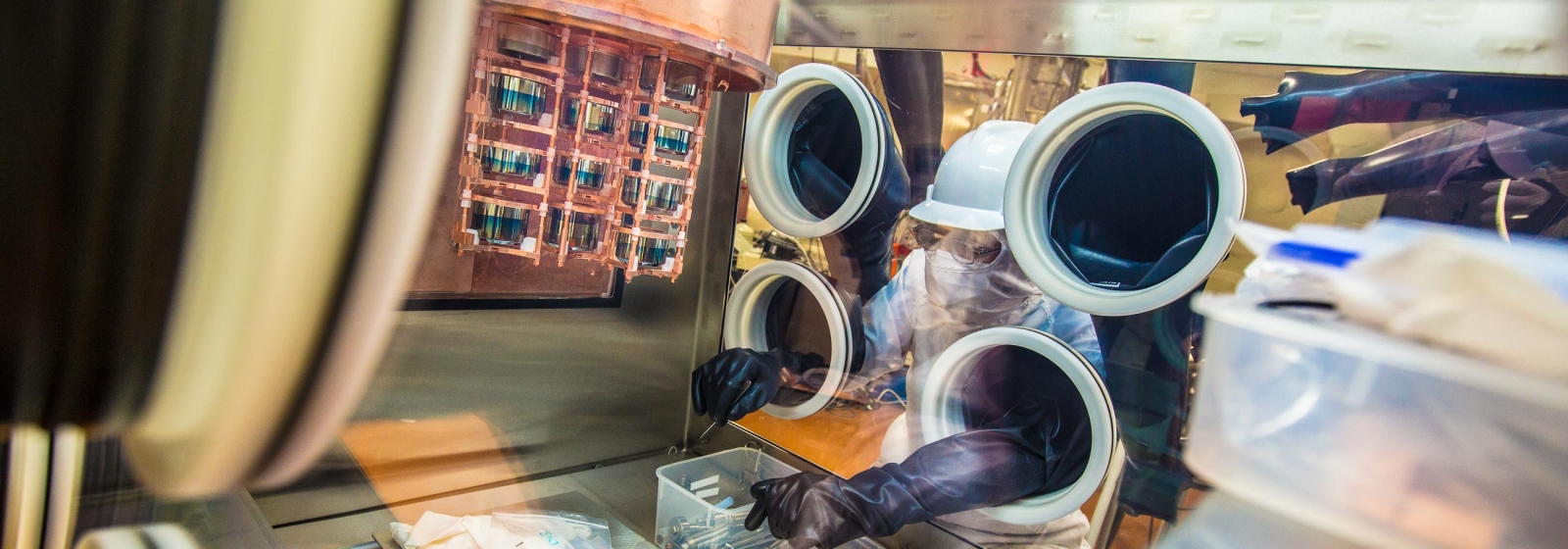For nearly six years, the Majorana Demonstrator quietly listened to the Universe. Nearly a mile underground at the Sanford Underground Research Facility, the experiment used 30 kilograms of pure germanium crystals enclosed in deep-freeze cryostat modules—protected by lead shielding in a laboratory nearly a mile underground—to look for one of the rarest forms of radioactive decay: neutrinoless double-beta decay.
This experiment helped physicists investigate one of the most challenging and important questions in physics: Why is the Universe filled with something instead of nothing?
With the publication of the experiment’s final results, humanity is one step closer to finding that answer.
On Feb. 10, 2023, the Majorana Collaboration published their final results in Physical Review Letters. The final results prove that the techniques used by the collaboration could be deployed on a much larger scale to search for the rare, never-before-seen decay.
The experiment ran from 2015 through 2021 and was managed by Oak Ridge National Laboratory (ORNL) for the U.S. Department of Energy Office of Nuclear Physics with support from the National Science Foundation. The Majorana Demonstrator Collaboration is comprised of more than 100 researchers from 19 institutions in the United States, Canada, Russia and Japan.
